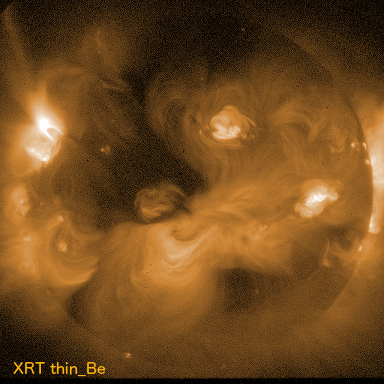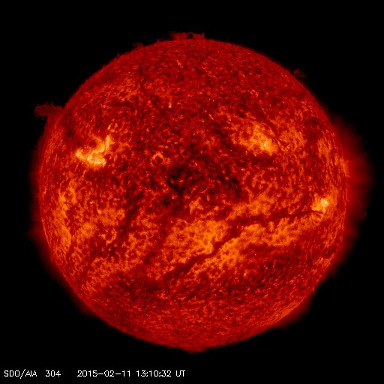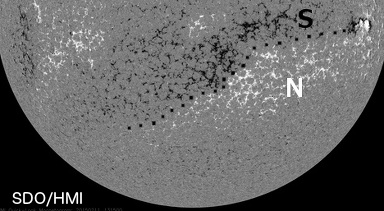


Click for full resolution image
A Crack On The Sun
|
At first glance, the Sun looks like it has a long crack near its center in the SDO/AIA 304 image on the right, but it is just an extremely long filament. Filaments occur in regions where the magnetic field switches direction, called the polarity inversion line (PIL). Along this line, the magnetic fields supports cool, dense material in the corona, forming long dark bands. The bottom image shows a magnetogram where black dots have been added to show the PIL. The magnetic forces in this region could cause this plasma along the PIL to rise and escape, but as you can see in the left XRT image, high loops form over the PIL connecting the north and south regions of the magnetic field, constraining the filament. It actually takes quite a bit of force to keep all that plasma from escaping and eventually the loops above the filament break and it's ejected, hopefully away from Earth, as a coronal mass ejection (CME). XRT provides a unique view of the filament because it can see the hot coronal loops that hold down the filament whereas other observatories only see the dark cool filament material. Since the magnetic fields holding down this filament are still pretty strong, it is not likely to erupt soon, but we'll keep watching it and hope to make the observations that provide us the clues to the mechanics that lead to an eruption. To learn more about the Sun's magnetic field read this NASA Science Nugget.Keywords: Filament, Prominence Filters: thin_Be |
(Prepared by Patricia Jibben)
| Back | Archive | Next |